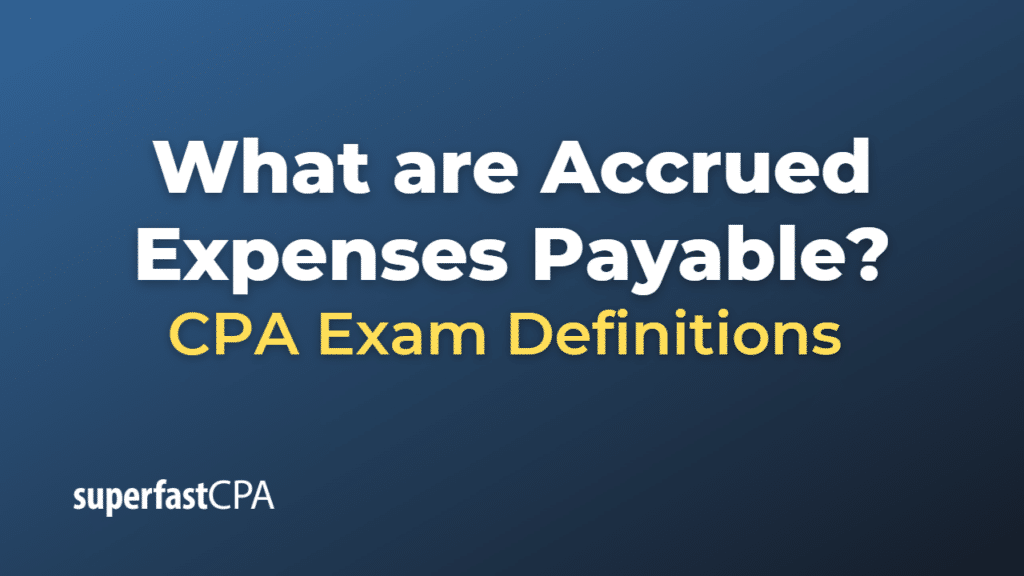Accrued Expenses Payable
Accrued expenses payable, also known as accrued liabilities, represent the amounts owed by a company for expenses that have been incurred during an accounting period but not yet paid. These are recorded in the financial statements under the accrual basis of accounting, which recognizes financial events as they occur, regardless of when the cash is exchanged.
Accrued expenses payable are a type of liability account that reflects the company’s obligations to pay certain expenses in the future. These accounts help ensure that the company’s financial statements accurately reflect its financial performance and commitments during a given accounting period, adhering to the matching principle.
Examples of common accrued expenses payable include:
- Wages and salaries payable: Amounts owed to employees for work performed during the accounting period but not yet paid at the period’s end.
- Utilities payable: Expenses for utilities like electricity, water, and gas that have been used by a company during the accounting period but not yet paid for.
- Interest payable: Interest expenses accrued on loans or lines of credit that haven’t been paid yet.
- Taxes payable: Taxes owed by a company based on its income or other taxable events during the accounting period but not yet paid.
- Professional services payable: A company may owe amounts for professional services, such as legal or accounting services, received during an accounting period but not paid for until it receives an invoice.
Accrued expenses payable are typically recorded as journal entries that debit the relevant expense account and credit the accrued liabilities or accrued expenses payable account. This ensures that the expense is recognized in the same accounting period in which it was incurred, in accordance with the matching principle.
Example of Accrued Expenses Payable
Let’s consider a hypothetical example to illustrate accrued expenses payable.
Imagine a company called “Blue Ocean Software” that develops and sells software solutions. Blue Ocean Software follows the accrual basis of accounting. The company’s accounting period ends on June 30th. Blue Ocean Software owes its employees wages for the last week of June, but the payment is scheduled for July 5th.
To account for the accrued wages payable, Blue Ocean Software would record the following journal entry at the end of the accounting period on June 30th:
Debit: Wages Expense – $50,000 (assuming total wages for that week amount to $50,000) Credit: Accrued Wages Payable – $50,000
This journal entry recognizes the wages expense in the same accounting period in which the employees provided their services, even though the payment will be made in the following month. The Accrued Wages Payable account is a liability account that represents the company’s obligation to pay the wages on the future payment date (July 5th).
By recording the accrued expenses payable, Blue Ocean Software ensures that its financial statements accurately reflect its financial performance and obligations for the accounting period, providing a clearer picture of its financial position for management, investors, and other stakeholders.













